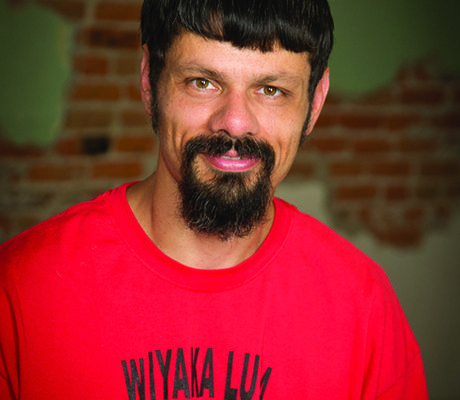“Meet at Greenhouse in the Snow,” was the plan for my son’s first activity with his new 4-H club. We joined the Goldenrod’s leader, parents and other members at the location on a recent sunny, windy Saturday afternoon for a tour. Russ Finch led our group into the space, past 30-year-old citrus trees, for an informative talk about the greenhouse he designed and built.
The namesake for this successful Alliance greenhouse manufacturing venture did not bring to mind a winter scene. Memories of a “greenhouse in the snow” intruded from watching my favorite animated version of Frosty the Snowman. As a kid, my family would tune in on a December evening to see Frosty enter a hothouse full of flowers and melt as drifts grew outside. All turned out well in the end, of course.
Nobody asked Russ whether he ever built snowmen or invited them inside. His greenhouse, however, supports more than 1,000 plants year round in an energy efficient environment. “It was a hobby for 18 years,” he said. “We brought in everything we could to see how it would do.”
This past summer, I had occasion to visit a new greenhouse at Bayard High School. That structure was square, boasting key automated systems in a space that doubled as a classroom and FFA project. This Alliance greenhouse, that I had first visited nearly 20 years ago, feels more organic. Trees and plants spring from the native soil in a carefully crafted miniature subtropical setting. Drivers heading north of town on Highway 87 may notice Russ’ 17 x 78-foot version built onto his home, yet the curved construction blends well. He told the visitors not to expect a tan since the translucent material is UV treated on the outside and moisture treated on the inside.
Russ treated the 4-H’ers to a lesson on citrus, including the varieties he grows and how long (up to three years after ripening for some lemons) they can hang on a branch. He waters Valencia oranges, the type cultivated commercially for juice, every 10 days with a hose this time of year then every 2-3 days in the summer. Among other fruit trees sharing the space: kiwi, pomegranate and fig. He pruned all the 30-year-old trees back (east end) in late February for the first time while also clipping the 12-15-year-old trees on the west end. Since Russ composts everything and chips everything that is a little over an inch for his plants he has only fertilized three times.
Over the years, Russ has taken advantage of demand to sell his fruit at times. A few years ago he sold 40 pounds of citrus a week to a local produce business. He noted that the Meyer lemons on his trees could ship anywhere.
Answering questions, the host explained his greenhouse has no backup heat system as he lets “temperatures go wherever.” One fan spreads heat from the ground, turning on when the temperature drops to 50 degrees or below. Concerning the need for pollinators, he replied it is a misconception. The only plant he has that does not self-pollinate is the pomegranate.
Anyone can set up a climate and grow about everything, Russ said about possibilities in a greenhouse. “You can get a dwarf variety of any tree.” He explained citrus is all grown from cuttings so the new plant will be true to the parent. From seed the probability of that result is 1 in 5, and you “have to wait eight years to find out,” he said.
The “Greenhouse in the Snow” was just as impressive this spring as I remember from my first experience. Russ continues to improve on his environmentally friendly methods and has partnered with Antioch Machine in recent years to offer the design to serious hobbyists and commercial growers. I plan to share more about the fabrication and marketing of a business that has produced hundreds of greenhouses sold in the lower 48 United States, Canada and Europe.

